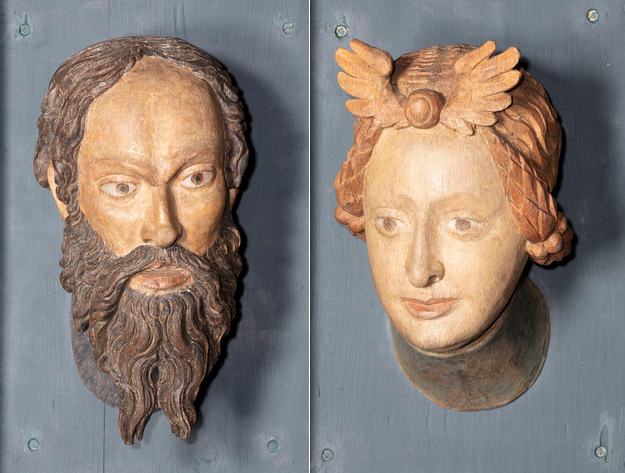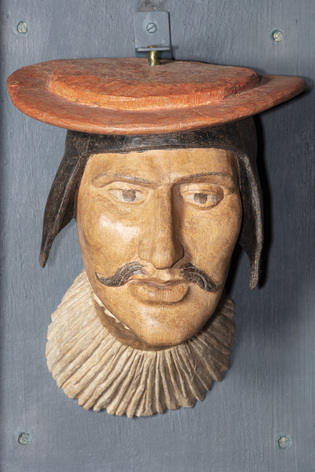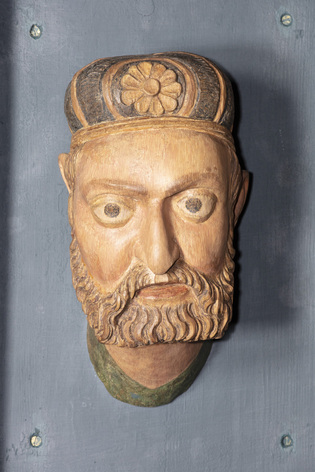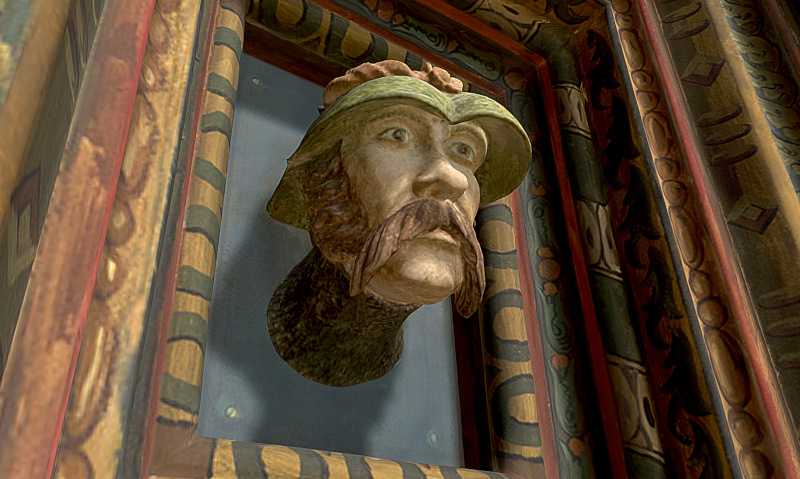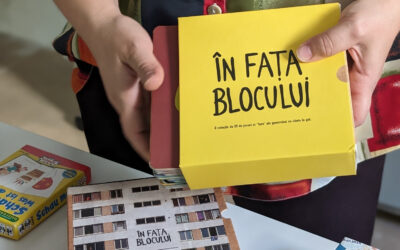Art and Fashion – The Wawel Heads
Art and Fashion – The Wawel Heads
This creative workshop introduces participants to the historic Wawel heads of Kraków and invites them to reimagine and recreate these figures through drawing, storytelling, and fashion. Blending art, history, and imagination, the activities encourage exploration of identity, style, and self-expression across time.
4-5 hours
adults and children aged 12 and above
Language Skills
A2-C2
Up to 20 participants
Participants develop historical awareness, visual interpretation, and descriptive language skills. They enhance creativity through drawing and role-play, practice public speaking during presentations, and reflect on fashion as a social and cultural expression—both past and present.
Computer with internet connection, data projector (optional), drawing or painting materials,fashionable head accessories (e.g. scarfs, fabrics, hats, caps. hair clips), printed visuals and texts

Languages Available
Step-by-step Guide
1. Set up the computer and, for a larger group, a data projector or prepare some handouts. Welcome the participants.
2. Tell the story of the Wawel heads.
Briefly introduce the participants to the history of the wooden sculptured heads that decorate the ceiling of the Envoys’ Hall in the Royal Castle of Kraków. Adapt your presentation to your target audience but don’t go into too much detail yet. If you show a reproduction of a sculptured head, avoid using one that will figure in the next activity.
3. Let Your Imagination Run Free!
- Explaining the task
Hand out to each participant a printed reproduction of a fragment of a Wawel head. Ask the participants to draw the full head asthey imagine it by using the utensils made available to them.
- Presenting the imagined heads
Ask the participants to present their work of art by giving the depicted person a name, evoking some of his or her characteristics and explaining their aesthetic choices. Who might the person be? Why is he or she wearing this particular headgear or has adopted a particular hair style?
- Comparing with the original Wawel heads
Show the participants reproductions of the original heads on a screen or by pinning printed-out versions on a wall next to the drawings orpaintings. Ask them to describe the heads. What forms and colours are dominating? What are the materials used? Complement their observationsby using the descriptions of each head published on the website.
4. Whose Head Is It?
- A short introduction
Use for this activity Anna Wyszyńska’s text ‘Keep your head!’ or its Polish version (see Online resources). Thus, explain to participants that fashioncan be considered as a long succession of styles of personal appearance over time, some short-lived, others appearing almost timeless, such asthe Wawel head of a philosopher on the left side of the previous page.
- Guessing game
Gather the participants around a table with reproductions of the Wawel heads on it. Then ask them to guess to which of the three categories a particular head might belong, what kind of person it may represent andwhy they think so. Discuss the findings with the group.
- How do art historians interpret the Wawel heads?
As a final step, present how art historians have interpreted the Wawel heads and what sources they use.
5. What would the Wawel heads look like today?
- Introduction to the activity
Ask participants to imagine what contemporary heads would look like? What would be the major differences and continuities in fashion when compared with the medieval and Renaissance periods? Are hats and caps still worn as frequently? During all seasons? And also indoors? Which materials dominate today? What about hair styles and, for men, facial hair? What does this say about the way that people present themselves or want to be perceived? Is fashion still as strongly linked to social status? In the Middle Ages and the early modern period there existed so-calledsumptuary laws which defined what a person was allowed to wear or prohibited to wear. By what factors are fashion and its choice shaped today?
- Creating your own stylish head
Ask participants to choose among the available materials and use them to create their own fashionable headwear and, if possible, hair style. Then invite them to present themselves to the group by referring to the fashion choices they have made and by adopting a language and body language characteristic of the person thus portrayed. Other members of the group are allowed to comment or ask questions.
- Forming a tableau vivant
To end this activity, ask participants to form a tableau vivant, that is to arrange themselves silently and without moving in a scene in which theinvented persons are likely to interact with each other in a real-life scene.
For detailed description of activities, see PDF files!

For Educators & Teachers
Preparation
- Make yourself familiar with the online resources you are going to use.
- Prepare a detailed lesson plan tailored to your audience and decide whether you want to hold the workshop in Polish or English.
- Create a glossary or vocabulary list of costume technical terms, colours and fabrics for a hand-out, if necessary with translations.
- Reflect on whether you prefer to show images on a screen or with the help of print-outs.
- Ensure that participants bring their own painting or drawing materials or provide them.
- Ask participants in time to bring various fashionable headwear and accessories for the 3rd activity.
Expected output
- Learners practise vocabulary and oral expression by using them in different contexts.
- New vocabulary is better memorised through the accompanying creative activities.
- Participants learn more about art and fashion during the Polish Renaissance, as well as the latter’s history.
- Enhanced creativity and soft skills such as team work and communication skills.
Adaptation/Application of the method
a group with varied language proficiency
The workshop can be held in the heritage or the majority language with elements of the former, depending on proficiency levels. If these vary considerably, consider letting participants work in tandems or small groups (incl. children and their parents). If appropriate, paraphrase difficult words or sentences in easy language or give translations.
other languages
Similar activities based on virtual museums can be conducted for other languages by using this learning module as a template, but this will require considerably more preparation, such as for identifying appropriate online resources and creating a lesson plan.
bilingual/multilingual options
The activities can be adapted to bilingual or multilingual settings. In the latter case, vocabulary lists or a glossary must be prepared for several languages, and the historical context has to be made more explicit, as participants are likely to lack knowledge of more specific Polish cultural and historical references, although fashion trends very much take place in a transnational context.
cultural context
Art and fashion transcend borders in early modern Europe and partly beyond. Moreover, Renaissance Poland and the Polish-Lithuanian Commonwealth define key moments in European history.
other age groups
The workshop has been designed for young people and adults with at least some interest in art and fashion. It can be adapted to younger childrenby simplifying the tasks and reducing the vocabulary to be used. You may also replace task where writing skills are necessary by repeating the titles out-loud. You might need also reduce the number of photos to choose by making children work in small groups. For the photo walk session; make sure that each group of children is accompanied by an adult.
outdoor version
Except for the last activity, the workshop has to take place indoors. However, it can be held in preparation of a visit to the Wawel castle (e.g.during a planned holiday trip or excursion to Kraków) or to any other museum or exhibition with a similar thematic focus.
distance learning options
– Online or blended settings are possible but will require adaptation and produce less interaction between participants.
– To avoid lengthy online sessions, activities should be split and some of the tasks be conceived as individual homework. Participants wouldonly meet online for presentations by the facilitator and to discuss individual results in a plenary session.
– Distance-learning needs more self-discipline and autonomous learning, which limit participation to older children and adults.
challenges
- Although the Wawel heads through their realistic features are accessible without much previous knowledge of art or history, someparticipants may lack the motivation to delve into more technical aspects. Activities should therefore be adapted to include all members ofthe audience, especially in mixed groups of older and younger participants or with very unequal proficiency levels in the heritage language.
- To avoid difficulties of comprehension of less advanced learners in a group with different language proficiency levels, stick to the list of wordsthat you share with your participants.
options for parents
- Parents interested in the subject can explore the Wawel heads, art and fashion together with their child or children, best in the course of an intergenerational workshop, but will need time for preparation – not always obvious! – and have a basic knowledge of Polish history andculture or of fashion if they wish to conduct the workshop on their own.
Developed by / Origin / Original language
Katarzyna Włusek & Rupert Hasterok, Comparative Research Network e. V. – English, Polish
References, and Resources
Online Resources
- The website of the Virtual Museums of Lesser Poland reproduces digitised images of the Wawel heads, including a 3D model of the Envoys Hall’s ceiling that let us inspect the heads from different angles, as well as descriptions of the heads in English and Polish. There you can find also an article in English by Anna Wyszyńska, ‘Keep your head’, on fashion and the Wawel heads, which has been used for this learning
module, and a presentation in Polish by the same author, ‘To się na głowie nie mieści!’ (‘This doesn’t fit my head!’) on the fashion of historical headwear. - Irena Turnau’s Słownik Ubiorów (1999) is a dictionary of Polish technical terms for historical costumes from the medieval period to the 19th
century, which can be used to create a glossary or vocabulary list. A digital copy is accessible here. - Valerie Cumming, C. W. Cunnington and P. E. Cunnington (2010) The Dictionary of Fashion History can be consulted for English terms here.
- Kazimierz Kuczman (2004) Renesansowe głowy wawelskie, Kraków: Zamek Królewski na Wawelu – Państwowe Zbiory Sztuki, 2004. ( A digital copy is available in the digital library Polonia here.)
- Przemysław Bociąga ‘A View from the Top: The Heads of Wawel‘ is a travel blog on the Wawel heads on the website 3 Seas Europe.
- A video on the sculpted heads crafted by Xawer Dunikowski in 1924 can be watched here.
All images of the Wawel ceiling and its carved heads have been published under the Creative Commons Licence, Creative Commons Attribution 3.0 Poland Licence (CC-BY 3.0 PL), and can be freely used on condition of proper acknowledgement, such as Małopolska Institute of Culture in Kraków, licence CC-BY 3.0 PL, creativecommons.org/licenses/by/3.0/pl. More on the terms of use for the Virtual Museums of Lesser Poland’s website can be found here.
Images of contemporary headwear have been created with the help of artificial intelligence software, in this case Adobe Firefly.
Other images are credited as follows:
– Portrait of Anna Jagiellon by Marcin Kober, Wikimedia Commons, Source: Stanisław Lorentz (1984). Muzeum Narodowe w Warszawie: malarstwo. Arkady.
ISBN 83-21332-01-3, p. 36
– Queen Bona Sforza, wood cut by Decius, Wikimedia Commons, Source: Decius I. L. De vetustatibus Polonorum liber I. De Jagellonum familialiber II. De Sigismundi regis temporibus liber III. Cracoviae, 1521
– Portrait of Sigismund I the Old by Hans von Kulmbach, Wikimedia Commons, National Museum in Poznań.
Similar Activities
Ma première histoire
This fun activity for all ages uses storytelling and a simple card game to help children develop language skills, creativity, and self-confidence by reading, identifying story elements, and creating their own stories
My First Story English Only
This fun activity for all ages uses storytelling and a simple card game to help children develop language skills, creativity, and self-confidence by reading, identifying story elements, and creating their own stories

